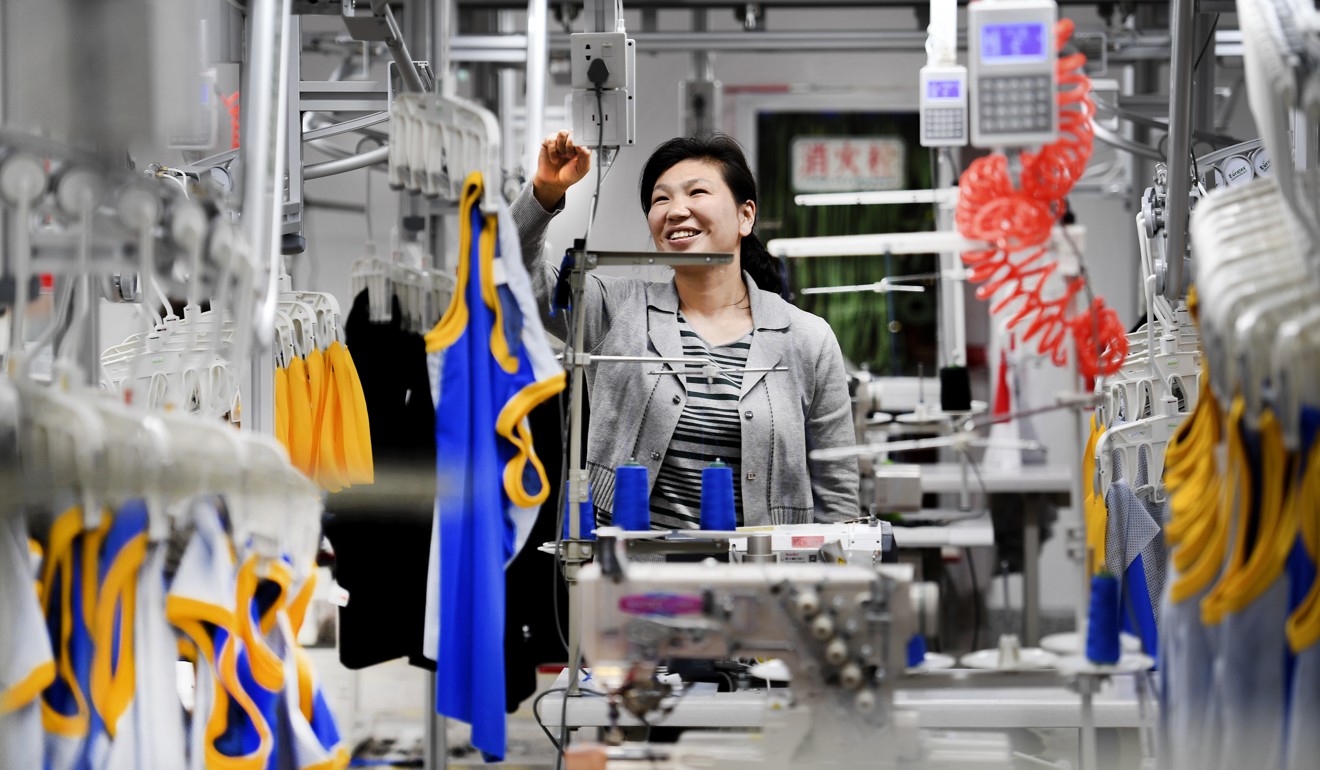
China will improve its IPR protection – but not as a result of US pressure
Patrick Mendis and Joey Wang say whatever measures the Trump White House deploys against China to enforce respect for intellectual property rights, it should not lose sight of the historical perspective of how nations develop. China today is only following in the footsteps of Japan and the US of old
At this point, the White House appears to have drawn the forward edge of the battle area. However, there seems to be a lack of consensus within the Trump administration as to the most effective approach to the desired outcome.
There are other factors Trump should consider regarding China’s intellectual property infringements.
China is not the first nation guilty of such infringements. Nor will it be the last. Historically, the velocity and trajectory of a country’s intellectual property laws – as well as its respect and observance for other nations’ – will be based on its level of economic development, and how it views the furtherance of its economic interests in relation to intellectual property rights.
America, in its formative years, is a case in point. As a young developing nation, it “refused to respect international intellectual property rights on the grounds that it was freely entitled to foreign works to further its social and economic development”, according to a 1986 study for US Congress.
Early America not only stole British designs, but also smuggled in skilled British craftsmen. Having fought so hard for their independence, Americans believed that the British intellectual property regime was simply a “pseudo-colonial ploy to force the United States to serve as a ready source of raw materials and as a captive market for low-end manufactures”, as one Foreign Policy commentator puts it. One could imagine the Chinese thinking the same thing today.

In the 1830s, American traders Nathaniel and Frederick Carne discovered a burgeoning tranche of middle-class consumers who, while not able to purchase high-end goods from Europe, still had some disposable income for affordable luxury. They sent some of their high-end luxury goods to China where they could be mass produced at a much lower cost, then imported them back to the US in quantity.
Between 1790 and 1836, when the US was a net importer of technology, the issuance of patents was restricted to US citizens and residents, according to a 2002 report by the UK Commission on Intellectual Property Rights. Even as late as 1836, patent fees for foreigners were 10 times greater than for US citizens. It was not until 1861 when foreigners would be treated “on an (almost wholly) non-discriminatory basis”.
Those who rail against China for all things “Made in China” would do well to recall the 1970s, when people railed against everything “Made in Japan”.
In the devastating aftermath of the second world war, Japan profited handsomely from the cold war that was heating up. With Mao Zedong’s takeover of mainland China, the US faced a two-front communist threat from both China and the Soviet Union. Consequently, the US made great efforts to keep Japan out of the Soviet sphere. With financial aid as well as military and political protection, the US kept its markets open to Japan’s goods while allowing Japan to severely limit access to its own market.
Under this arrangement, “Japan obtained nylon from DuPont, nuclear power from General Electric and Westinghouse, the transistor from Bell Laboratories, and television tubes from Corning Inc,” Professor David McHardy Reid of Seattle University’s Albers School of Business and Economics noted in a 2012 paper. “Licensed US IP contributed the technological basis for nearly all of Japan’s modern industries.” Companies such as IBM and Texas Instruments not only shared their technology with Japan, but also set up factories there.

The history of Chinese intellectual property has only progressed in fits and starts. In the 20th century, between invasions from Japan, the second world war, and internecine warfare, patents in China had virtually no real protection; consequently, it had “virtually no tradition of patent protection entering the modern era”, according to one study.
It was not until the 1980s, after China became a member of the World Intellectual Property Organisation, that it began to strengthen its intellectual property framework and enact laws that governed the protection of these rights.
The history of Chinese intellectual property has only progressed in fits and starts
Whatever punitive measures the Trump administration decides to take, China is likely to continue to violate intellectual property rights until it decides that doing so is no longer in its economic interest. The China scholar Frederick Abbott has claimed that the infringement of intellectual property will fuel economic development “until the country reaches the point where intellectual property rights protection becomes economically advantageous to a sufficiently strong set of domestically vested interests”.
There are no exceptions to passing through this phase of a nation’s development. It is true of Japan, for example. Former senior economist with the White House Council of Economic Advisers Christine McDaniel has noted that decades of US pressure had had little effect on Japanese behaviour. Only when domestic firms found themselves “suffering at the hands of local copycats” did the Japanese government decide to significantly strengthen Japan’s intellectual property rights.
China is likely to be in transition from a supplicant to a competitor in intellectual property. The problem is that, unlike Japan, China is not only an economic competitor, but also an ideological competitor.
There is no question that the US should challenge China on its protection of intellectual property rights. However, rather than using a blunt instrument like tariffs, Trump would be more effective coordinating with US friends and allies to apply unified pressure on Beijing.
In the meantime, as McDaniel points out, China may someday change its ways, but don’t count on that happening until it is good and ready.
Patrick Mendis is a former American diplomat who is currently an associate-in-research at the Fairbank Centre for Chinese Studies at Harvard University. Joey Wang is a defence analyst. Both are alumni of the Harvard Kennedy School of Government


